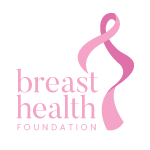Breast infections most commonly affected women from 18-50 years. They can be divided into infections related to breast-feeding and those that are not (non-lactational abscesses). It is important to treat any infection of the breast early and correctly to ensure they do not develop into deeper problems. As with all diseases of the breast it is also important to make sure a cancer is not missed.
Lactational breast abscess
This is a localised infection in the skin and tissue of the breast that is caused by bacteria which can enter the breast through a cracked nipple or fissure. It commonly occurs in the second to fifth week of breast feeding when a mother is still getting used to the whole procedure.
Unsatisfactory breast feeding may cause milk retention and stasis which can make the problem worse. The breast becomes hard and swollen, completely or in one area, and it is painful to breastfeed or even to touch the breast. When the breast is swollen like this it is called mastitis.
This can be adequately treated with antibiotics. During this phase frequent expression of milk will help prevent stasis and progressive infection. Cabbage leaves kept cold in the fridge also provide relief from the discomfort.
Milk must be expressed from the infected breast (the one with the abscess) that is involved in the inflammatory process and the baby can continue to feed from the other breast. If the mother wants to stop breast feeding, lactation can be suppressed with fluid restriction and medications.
As the infection develops, if left untreated, it can form a collection of infected fluid which can then cause even more pain and sometimes a bulge in the breast (known as an abscess). The current recommended treatment is high-dose antibiotics (Co-amoxiclav is the drug of choice and is safe in breastfeeding mothers) as well as repeated ultrasound- guided aspiration. It is uncommon to resort to a surgical procedure to drain the infected fluid out of the breast.
Cabbage leaves kept cold in the fridge also provide relief from the discomfort. (Yes, they really do)
Thrush
Thrush can also affect the lactating breast, causing burning, shooting pains during breastfeeding and causing sore patches on the nipples (and a paler areola). The difficulty with thrush is that it can be passed from the baby’s mouth to the mother’s breast (causing the infection in the first place), and as the mother feeds the baby, it can be passed back again. It is very important to the mother and her baby at the same time, for long enough to ensure all infection is gone. Thrush can be treated with Fluconazole (difflucan) tablets and an anti-fungal cream for the nipples.
Non-lactational Breast Abscess
Breast abscesses can occur in women who are not breastfeeding. They may occur around the nipple as a result of chronic inflammation and active infection around the central ducts of the breast underneath the nipple. This is a result of duct ectasia, a widening and thickening of the ducts due to inflammation (and often smoking).
As the infection develops from mastitis, a collection of infected fluid forms in the tissue along with surrounding swelling. The skin may become thin or flaky. Just like in lactational abscesses this pus collection will not resolve on antibiotics alone and management is high dose antibiotics (Co-amoxyclav is the drug of choice if no penicillin allergy is present) as well as repeated ultrasound guided aspiration. This is followed in certain complicated cases by surgical drainage with biopsy of the abscess wall, but should not be performed outside of a specialist breast centre.
Less frequently an abscess can be caused by an underlying infection such as TB and when you have HIV/AIDS this can be more likely. It is important to be treated in a specialist unit that can adequately diagnose and manage treatment of these infections, particularly in patients who have HIV
Breast Cancer can also present looking like an abscess or mastitis. This is called Inflammatory Breast Cancer and it is the way 2-5% of Breast Cancers present. No infection should be ignored and all infections should be seen by a breast specialist who will be able to optimally diagnose and treat and unusual causes.
Superficial skin infections (boils, sebaceous cysts and recurrent skin abscesses) can also occur in the skin over the breast, but these are not related to the breast tissue.
